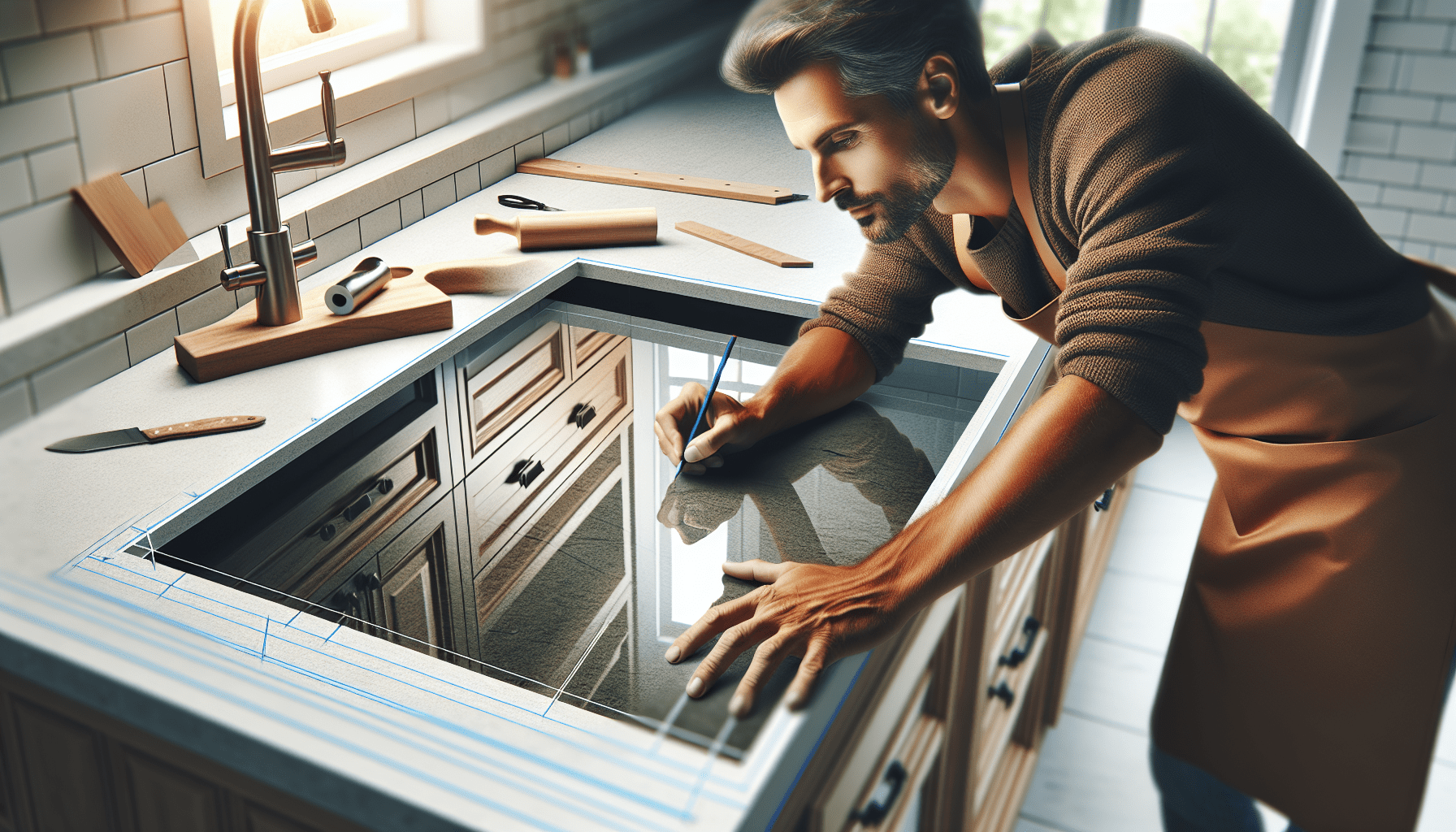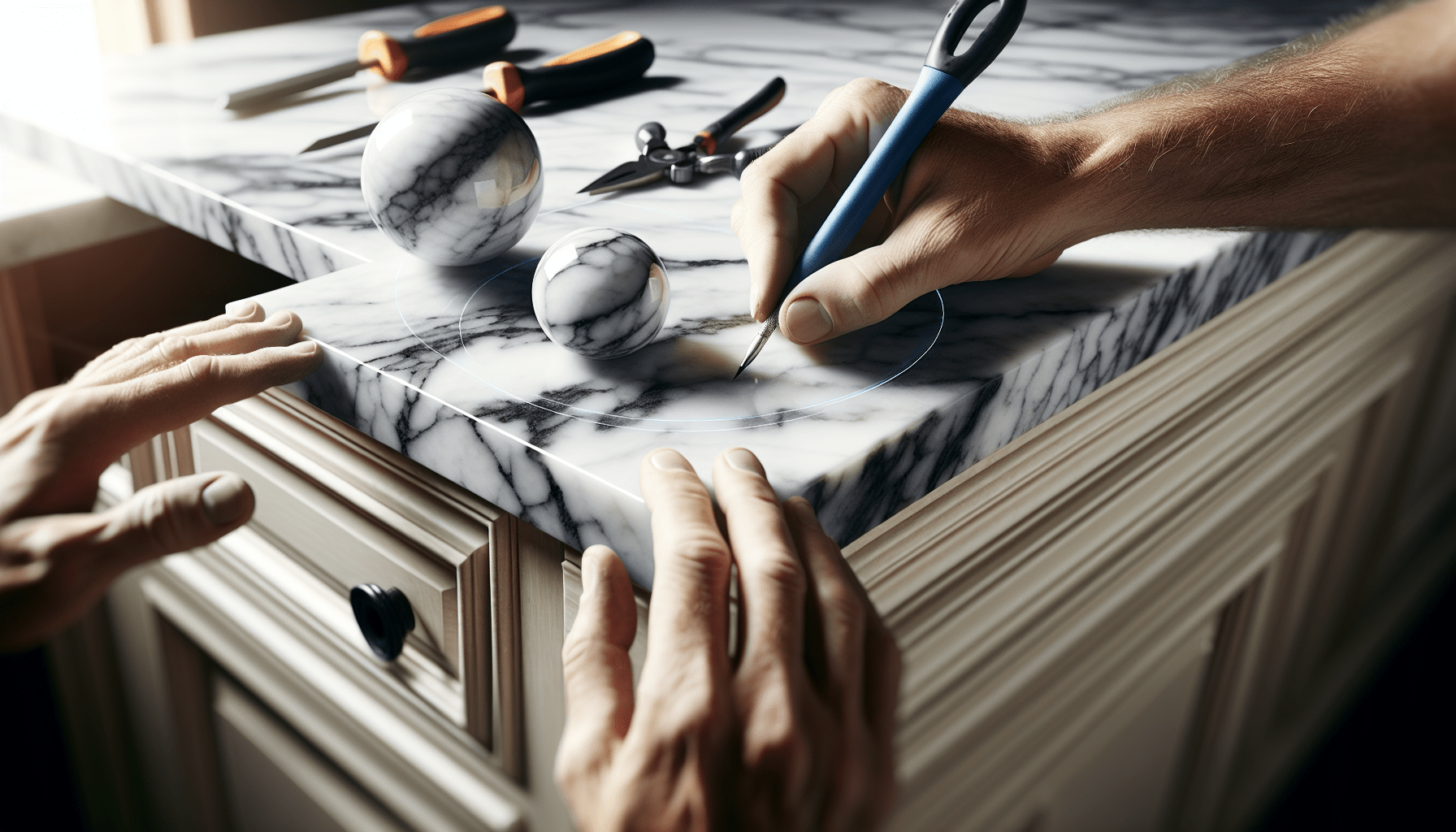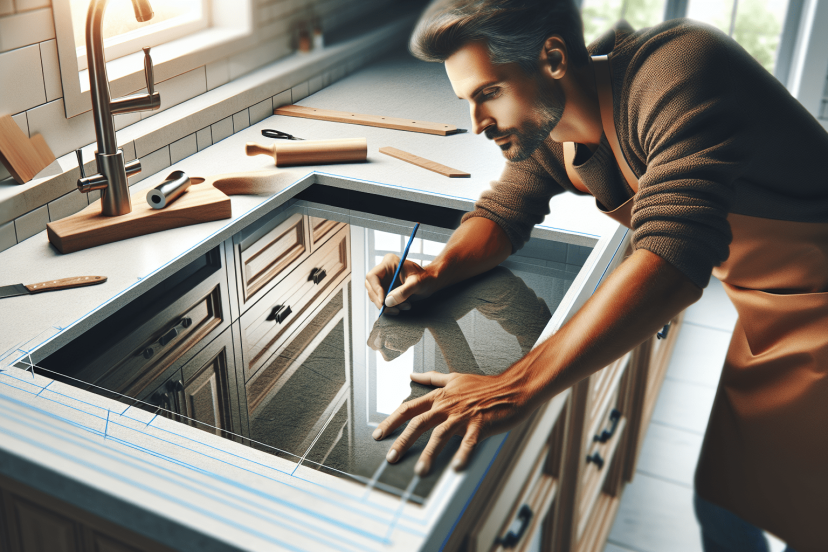How Long Do Countertops Have To Sit After Install?
You’ve just installed brand new countertops in your kitchen, and now you’re wondering how long you have to wait before you can fully enjoy your upgraded space. The answer may vary depending on the type of countertop material you chose, but generally speaking, countertops need some time to settle and cure after installation. This allows any adhesives or sealants used during the installation process to properly bond and harden, ensuring a durable and long-lasting finish. In this article, we will explore the recommended waiting times for different countertop materials, so you can be well-informed and get the most out of your new kitchen investment.
Why Countertops Need Time to Sit After Installation
The Importance of Allowing Countertops to Settle
After the installation of countertops, it is crucial to give them sufficient time to settle. Countertops are heavy and typically made of materials that require curing, drying, and sealing to ensure their durability and longevity. Allowing countertops to sit after installation is essential for their structural stability and overall performance.
Factors That Affect the Duration
Several factors come into play when determining the duration of time that countertops need to sit after installation. The type of material used, climatic conditions, and the specific installation process can all influence the recommended waiting period. It is important to consider these factors to ensure the countertops have enough time to properly cure and settle.
Possible Consequences of Not Allowing Countertops to Sit
Failing to allow countertops to sit after installation can lead to various issues and consequences in the long run. For instance, if the curing process is interrupted or insufficient, the countertops may become weak and prone to cracking or chipping. Inadequate drying can result in moisture-related problems such as mold or mildew growth. Additionally, neglecting to seal countertops can make them vulnerable to stains, scratches, and other damage. Taking the time to let countertops sit after installation helps prevent these potential issues and ensures the longevity of the investment.
Initial Waiting Period
Recommended Timeframe
The recommended timeframe for waiting after countertop installation varies depending on the material and specific installation circumstances. However, on average, it is advisable to allow countertops to sit for a minimum of 24 to 48 hours. This initial waiting period allows the material to settle, giving it time to adapt to its new environment and stabilize.
Reasons Behind Initial Waiting Period
The initial waiting period is crucial because it allows the countertops to adjust to the temperature, humidity, and pressure changes in the space where they are installed. It gives the material time to expand or contract, avoiding potential issues such as warping or cracking. Additionally, this waiting period helps the adhesive used during installation to cure properly, ensuring a secure and stable bond.
Care and Precautions During This Period
During the initial waiting period, it is vital to take proper care of the newly installed countertops. Avoid placing heavy objects on them to prevent excessive pressure that could compromise their structural integrity. It is also essential to avoid any impact or accidental damage that could occur during this delicate settling period. Cleaning should be minimal, using only a soft cloth and a mild, non-abrasive cleaner. Following these precautions ensures the countertops have the best chance to settle and cure effectively.

Curing and Drying Time
Understanding the Curing Process
Curing is a crucial stage in countertop installation that involves the hardening and strengthening of the material used. This process allows the countertops to achieve their optimal strength and durability. During the curing phase, the adhesive and any applied sealant gradually reach their maximum effectiveness, ensuring a long-lasting bond and protection.
Differences Between Natural Stone and Engineered Countertops
The curing and drying time for countertops can vary depending on whether they are made of natural stone or engineered materials. Natural stone countertops, such as granite or marble, generally require a longer curing period due to their inherent characteristics. Engineered countertops, like quartz or solid surface materials, often have shorter curing times as they are manufactured to be more consistent in their properties.
Average Curing Time for Different Materials
The average curing time for countertops made of natural stone can range from a few days to several weeks. It is important to consult with the manufacturer or installer to determine the specific curing period for the chosen material. Engineered countertops typically have a shorter curing time, usually ranging from 24 to 72 hours. Following the recommended curing timeframe ensures that the countertops have enough time to develop their maximum strength and stability.
Sealing and Protecting
The Role of Sealing in Countertop Maintenance
Sealing countertops is an important step in their maintenance and protection. It helps prevent the penetration of liquids, stains, and bacteria into the material, extending its lifespan and maintaining its appearance. Sealing acts as a barrier that reduces the risk of damage caused by spills, chemicals, or regular usage, making it an essential step in countertop care.
Best Practices for Sealing Countertops
When it comes to sealing countertops, it is crucial to choose the appropriate sealant for the specific material. Different materials may require specific types of sealants to achieve optimal results. It is advisable to follow the manufacturer’s recommendations for application frequency and technique. Regularly resealing the countertops, based on usage and exposure, ensures their continued protection and longevity.
How Long to Wait Before Sealing
The waiting period before sealing countertops can vary depending on the material and manufacturer’s instructions. In general, it is recommended to wait at least 24 to 48 hours after installation before applying a sealant. This waiting period allows the material to cure and reach its optimal strength. However, it is important to consult with the manufacturer or installer for specific guidance on when it is safe to proceed with sealing.

Usage Restrictions
Avoiding Heavy Loads and Impact
To prevent damage to newly installed countertops, it is essential to avoid placing heavy objects or applying excessive pressure on them during the initial settling period and beyond. Heavy loads or impact can compromise the structural integrity of the countertops and lead to cracks or breakage. It is important to follow weight restrictions and handle objects with care to ensure the longevity and durability of the countertops.
Proper Cleaning Methods and Products
Utilizing proper cleaning methods and products is crucial for maintaining the condition and appearance of countertops. Avoid using abrasive cleaners, harsh chemicals, or rough scrubbing tools that can damage the surface. Instead, opt for mild, non-abrasive cleaners and soft cloths or sponges for regular cleaning. Following the manufacturer’s recommendations for cleaning products and techniques helps prevent unnecessary wear and tear, ensuring the countertops remain in optimal condition.
Limitations on Heat Exposure
Different countertop materials have varying degrees of heat resistance. It is important to understand the limitations of the specific material to avoid the risk of damage from excessive heat. Using trivets, hot pads, or other protective measures is recommended to prevent direct heat exposure. Placing hot pots and pans directly on the countertop surface can cause thermal shock and potentially lead to cracks or discoloration. By practicing caution and protecting the countertops from excessive heat, their longevity and aesthetics can be preserved.
Testing Countertop Readiness
Visual Check for Complete Curing
A visual check can help determine whether the countertops have fully cured and settled. Look for any signs of cracking, warping, or shifting that may indicate an issue with the installation or material. If the countertops appear stable, level, and without any visible concerns, it is a good indication of successful curing and settling.
Water Absorption Test
Performing a water absorption test can help confirm the readiness of the countertops. Sprinkle a few drops of water on the surface and observe how the material reacts. If the water beads up and remains on the surface without seeping in or causing any discoloration, it indicates that the sealant is still effective and the countertops are adequately protected. If the water is absorbed or leaves noticeable marks, it may be time to reseal or perform additional maintenance.
Expert Consultation for Confirmation
When in doubt about the readiness of countertops after installation, it is advisable to consult with industry professionals or the manufacturer. They can provide specific guidance and expertise based on the material and installation method used. Their input and confirmation can help ensure that the countertops are indeed ready for full use and can provide the necessary reassurance for long-term durability and performance.
Working with Countertop Professionals
Consultation and Agreement on Installation
When selecting professionals for countertop installation, it is crucial to engage in thorough consultation and detailed discussions. Clearly communicate your expectations, requirements, and any specific concerns to ensure a comprehensive understanding. Agree on the timeline, materials, and installation process to avoid any misunderstandings during or after the installation.
Getting Detailed Instructions and Information
Countertop professionals should provide detailed instructions and information regarding the installation, curing, and maintenance process. This includes recommendations for the waiting period, care during that time, and proper cleaning and sealing methods. It is important to ask questions and seek clarification to ensure a clear understanding of the steps involved and the responsibilities as a homeowner.
Following Manufacturer Guidelines
Following the manufacturer’s guidelines is essential for proper countertop installation and maintenance. Each material may have its own unique requirements, such as curing time, cleaning products to avoid, or specific sealing recommendations. Adhering to these guidelines helps protect the warranty and ensures that the countertops remain in optimal condition throughout their lifespan.
Countertop Material Considerations
Different Materials, Different Requirements
Different countertop materials have varying requirements in terms of installation, maintenance, and overall care. Understanding the specific needs of each material helps ensure their long-term durability and performance. Whether it is granite, quartz, marble, or other materials, it is essential to educate yourself on their characteristics and recommended practices.
Granite Countertops
Granite countertops are known for their durability and natural beauty. They often require a longer curing time due to their dense composition. Sealing is necessary for granite countertops to prevent staining and keep them looking their best. It is recommended to follow the manufacturer’s guidelines for sealing frequency and use cleaning products formulated specifically for granite.
Quartz Countertops
Quartz countertops, engineered from natural quartz and resin, are non-porous and low maintenance. They generally have a shorter curing time compared to natural stone countertops. However, they still require proper sealing to enhance their resistance to stains and ensure their longevity. Consult the manufacturer’s instructions for specific recommendations on sealing and cleaning quartz countertops.
Marble Countertops
Marble countertops are elegant and timeless, but they are more susceptible to damage and staining compared to other materials. They require regular and careful cleaning with non-abrasive cleaners to avoid corrosion or etching. Sealing marble countertops is crucial to protect them from stains and daily wear. It is advisable to consult with professionals for proper sealing techniques to maintain the beauty and integrity of marble countertops.
Other Materials
There are various other countertop materials available, each with its own unique requirements and characteristics. Solid surface materials, laminates, concrete, and wood countertops all have specific care and maintenance needs. Research, consult professionals, and follow the manufacturer’s guidelines to ensure the appropriate installation and care for your preferred countertop material.
Expert Advice and Opinions
Industry Experts’ Recommendations
Experts in the countertop industry recommend taking the necessary time to allow countertops to cure and settle after installation. They stress the importance of adhering to manufacturer guidelines, following recommended maintenance practices, and consulting professionals when in doubt. By doing so, homeowners can ensure the long-term durability, performance, and aesthetics of their countertops.
Common Mistakes to Avoid
One common mistake homeowners make is rushing the usage of countertops after installation, neglecting the necessary waiting periods. Another mistake is using abrasive cleaners or tools that can damage the countertop surface. Overlooking the need for regular sealing is also a common oversight that can lead to staining or other damage. Becoming aware of these common mistakes and actively avoiding them can help maintain the quality and functionality of countertops.
Personal Experiences and Opinions
Many homeowners who have experienced issues due to not allowing countertops to settle or curing insufficiently emphasize the importance of patience and proper care. They share their personal stories of encountering damages, such as cracks, stains, or warping, as a result of not following the recommended practices. These anecdotes serve as valuable reminders for others to avoid similar pitfalls and take the necessary steps for proper installation and maintenance.
Conclusion
The Importance of Patience for Countertop Longevity
Patience is a virtue when it comes to countertop installation and maintenance. Allowing countertops to sit, cure, and settle after installation is crucial for their overall performance, durability, and appearance. Taking the necessary time ensures that the material can adjust to its new environment, bond securely, and reach its optimal strength.
Taking Necessary Steps for Proper Installation and Maintenance
By following manufacturer guidelines, consulting professionals, and practicing proper care and maintenance, homeowners can take the necessary steps for proper countertop installation and longevity. From the initial waiting period to sealing, avoiding heavy loads, using appropriate cleaning methods, and understanding material-specific requirements, attention to detail and patience are key. By doing so, countertops can maintain their beauty, functionality, and value for years to come.




